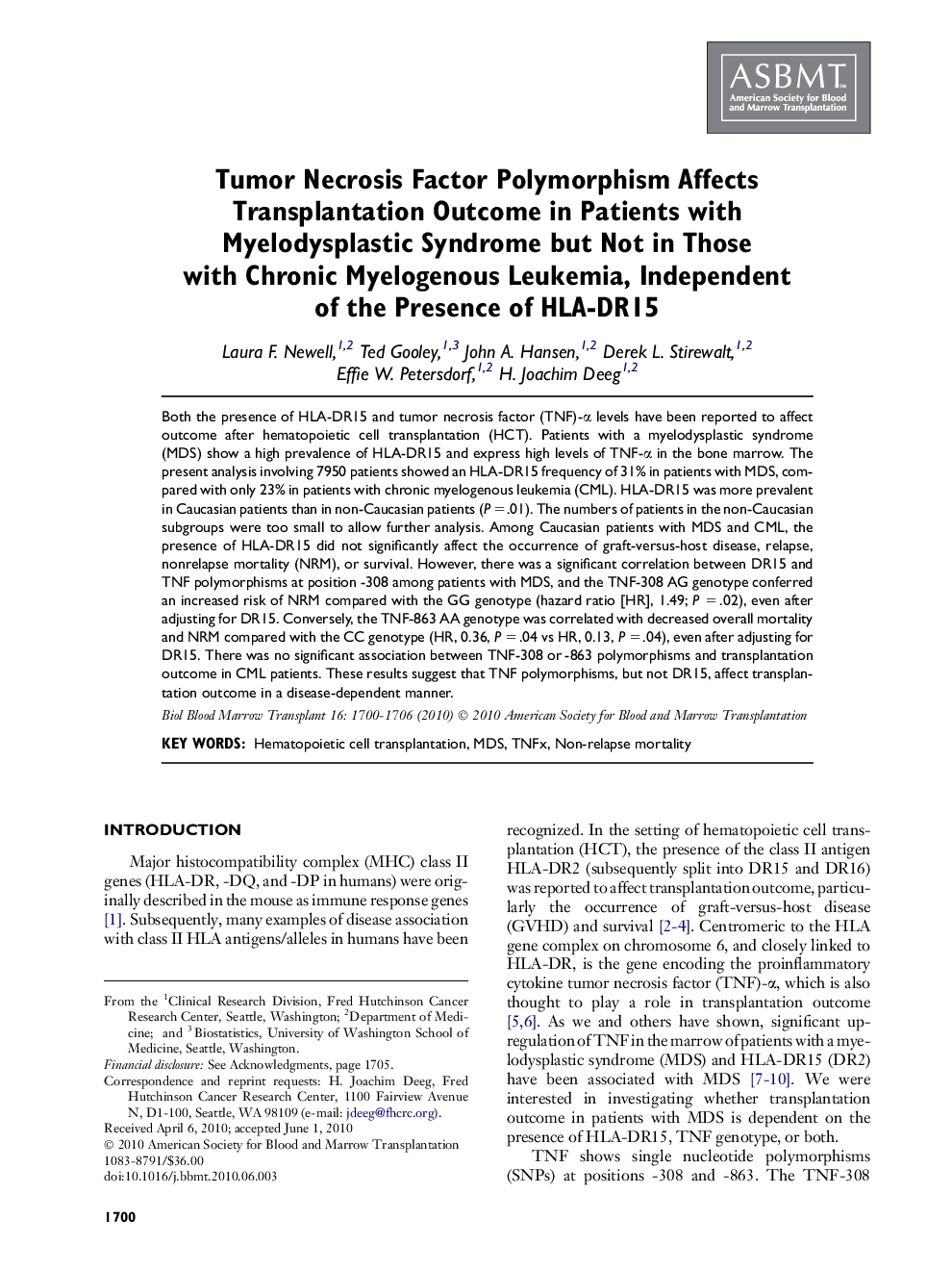| Article ID | Journal | Published Year | Pages | File Type |
|---|---|---|---|---|
| 2103660 | Biology of Blood and Marrow Transplantation | 2010 | 7 Pages |
Both the presence of HLA-DR15 and tumor necrosis factor (TNF)-α levels have been reported to affect outcome after hematopoietic cell transplantation (HCT). Patients with a myelodysplastic syndrome (MDS) show a high prevalence of HLA-DR15 and express high levels of TNF-α in the bone marrow. The present analysis involving 7950 patients showed an HLA-DR15 frequency of 31% in patients with MDS, compared with only 23% in patients with chronic myelogenous leukemia (CML). HLA-DR15 was more prevalent in Caucasian patients than in non-Caucasian patients (P = .01). The numbers of patients in the non-Caucasian subgroups were too small to allow further analysis. Among Caucasian patients with MDS and CML, the presence of HLA-DR15 did not significantly affect the occurrence of graft-versus-host disease, relapse, nonrelapse mortality (NRM), or survival. However, there was a significant correlation between DR15 and TNF polymorphisms at position -308 among patients with MDS, and the TNF-308 AG genotype conferred an increased risk of NRM compared with the GG genotype (hazard ratio [HR], 1.49; P = .02), even after adjusting for DR15. Conversely, the TNF-863 AA genotype was correlated with decreased overall mortality and NRM compared with the CC genotype (HR, 0.36, P = .04 vs HR, 0.13, P = .04), even after adjusting for DR15. There was no significant association between TNF-308 or -863 polymorphisms and transplantation outcome in CML patients. These results suggest that TNF polymorphisms, but not DR15, affect transplantation outcome in a disease-dependent manner.
